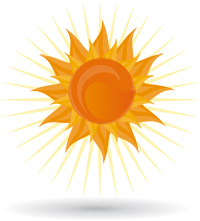Early Season Alfalfa Stand and Pest Management
As the 2025 growing season begins, evaluating alfalfa stands and preparing for insect pests can help maximizing yield and maintaining healthy fields this year. Assessing plant health in the spring helps set expectations, while timely scouting can prevent pest infestations from reducing production. Proper evaluation and management allow for more informed decisions regarding fertilization, irrigation, and harvest timing, ultimately improving overall forage quality and yield.
We'll start with plant health. Dig down 4-6 inches down next to a plant and inspecting the taproot. A healthy plant will have a white, firm taproot, while winter-damaged plants may show stringy, brown, or yellow roots. Next, examine the crown for basal buds, which are critical for strong early growth. The presence of intact buds indicates a productive first cutting, while missing buds suggest reduced initial yields. Plants that have sustained significant winter damage may struggle to regrow, making it necessary to consider replanting or overseeding where stand density is too low.
Stand counts provide further insight into potential productivity. Established stands should have 4-5 healthy plants or at least 55 stems per square foot for optimal production. Newly seeded stands should maintain at least 12 plants per square foot to remain viable. Using a hay square-either a 17x17 inch square or a 19-inch diameter circle-makes counting plants or stems per square foot simple. Sampling 4-5 random areas ensures an accurate assessment. If stand density is below recommended levels, yield potential will be significantly reduced, and supplementation with other forages may be necessary.
Spring insect pressure has been an issue the past few years and can often sneak up on us. The most significant pests to monitor for early are army cutworms and alfalfa weevils. Army cutworms, which feed at night, cause semi-circular leaf damage and can delay green-up. Higher bird activity in fields can indicate their presence, and scouting should begin in early April. Alfalfa weevils, start feeding in early spring. Their feeding causes pinholes in terminal leaves, progressing to skeletonization and a frosted field appearance. Early detection and intervention can help keep pest populations below economic thresholds. Adults typically overwinter and lay eggs in the spring in northeast Nebraska, so scouting should begin at 200 to 250 GDD. While there isn't evidence of fall laid eggs overwintering, if this does occur, the timer for scouting should be lowered to 180 GDD, which we have already reached. Peak damage occurs around 575 GDD. If left unchecked, these pests can cause severe yield loss and diminish forage quality, leading to reduced feed value for livestock.
By evaluating alfalfa stands early and implementing a proactive pest scouting program, producers can set realistic yield expectations and protect their crops from potential losses.







